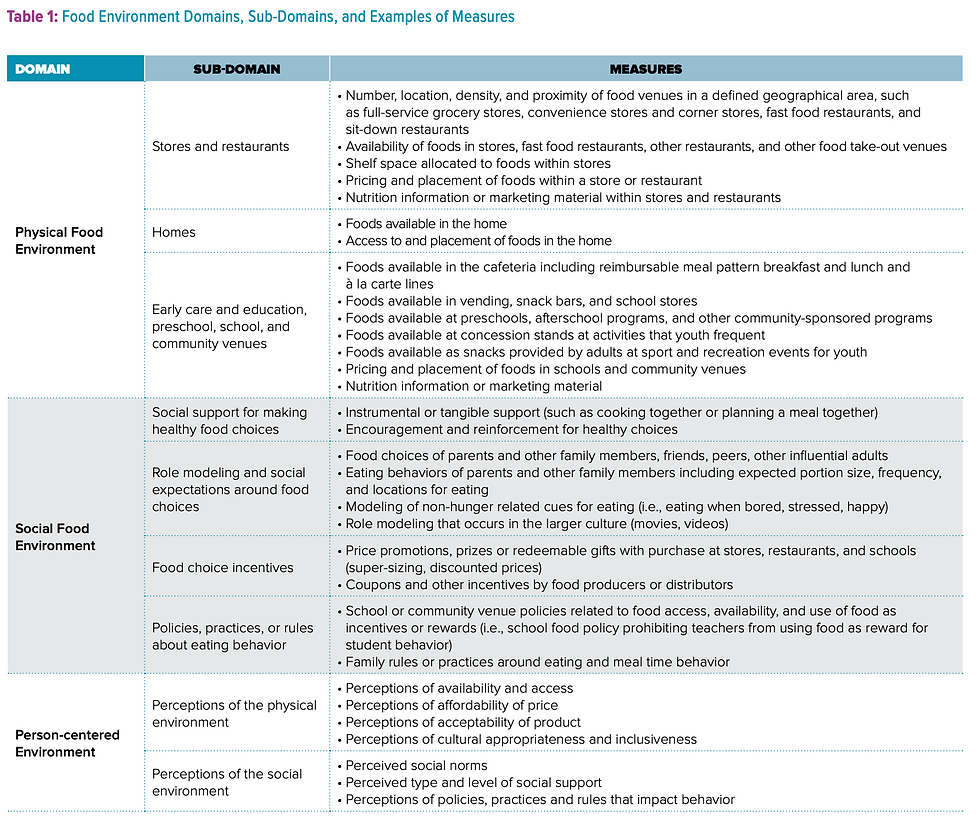FOOD ENVIRONMENT AND OBESITY IN DETROIT

FOOD ENVIRONMENT
is the combined physical and social factors that influence how an individual gets their nutrition.
Food environment is typically measured by distance to the nearest grocery store, but a more encompassing definition captures a wide range of elements that influence how we eat: the food we have access to at home, subsidized meal programs at schools, affordability and accessibility of nearby supermarkets, or zoning laws limiting the number of fast-food restaurants on a city block. (NCCOR, 2016)
The National Collaborative on Childhood Obesity Research compiled food environment domains, sub-domains, and more examples of measurement in the table below:

To better understand these elements that affect how we eat, food equity researchers have conceptualized food environments into two main categories: deserts and swamps.

FOOD DESERTS
are typically rural areas where a person's diet is limited most by distance to the grocery store.
The U.S. Department of Agriculture defines food deserts as “regions of the country [that] often feature large proportions of households with low incomes, inadequate access to transportation, and a limited number of food retailers providing fresh produce and healthy groceries for affordable prices." (Dutko et al., 2012, p. 1).
Indeed, lack of access to quality groceries poses serious implications on quality of diet: research conducted in four rural Iowa counties uncovered that 45% of residents lacked adequate fresh fruit, 66% lacked vegetables, 34% lacked dairy, and 25% lacked protein (Morton and Blanchard, 2007).
FOOD SWAMPS
are typically urban areas where a person's diet is limited most by the oversaturation of unhealthy food and affordability of healthier options.
They are typically defined as communities where “large amounts of energy-dense foods sold in venues… ‘inundate, or swamp out’ the ‘relatively few’ healthy food choices residents have” (Taylor et al., 2015).
The city of Detroit is best defined as a food swamp. Despite physical access to over "70 full-line, independent grocery stores," cost is a major limiting factor for the 40% of residents that live below the poverty line (Hill, 2015).
